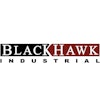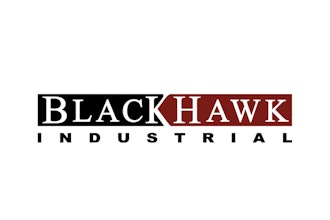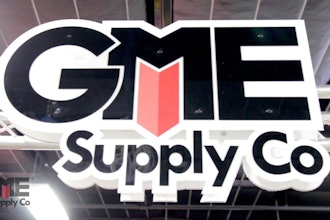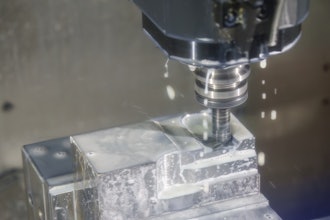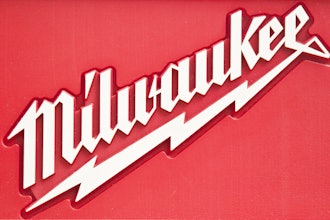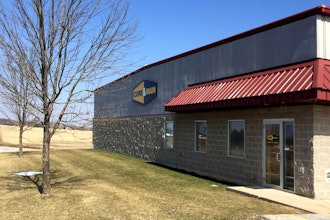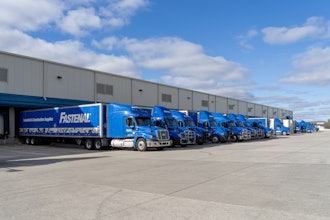BROUGHT
TO YOU BY:
Today’s B2B distribution
market demands speed—
not only to compete, but
to survive. Here’s how
distributors can become
faster and better.
SPEED
WINS
D istributors have faced numerous challenges ever since the B2B distribution market has existed. Today, there are more challenges than ever. They
include an often uphill battle to increase digital capabilities
seen in the B2C world to match changing customer
expectations; finding new and qualified talent to replace
a generation of Baby Boomer staff that still comprise a
large portion of executives and managers; they include
the threat of suppliers bypassing distributors in the supply
chain and selling direct to customers; and as always,
competition from fellow distributors—large and small.
Amidst all those foes, one factor has remained a powerful
weapon for distributors: speed. The ones that progress against
these challenges the fastest have a natural advantage. The
distributors that can process orders; adapt to market and
customer trends; and respond to customer needs quicker
than their competitors stand to win repeat business and grow
their reputation as the best solution provider available.
This whitepaper will examine areas where distributors can
become faster and the tools available to get there. Primarily,
we’ll look at the following:
• Data
• Automation
• Digitization
• Using the Cloud
Data
“Big Data” has been a hot topic across all of manufacturing
for more than a decade, resulting in distributors and
suppliers employing numerous methods of harvesting as
much business data as possible. In doing so, many overlook
the data already organically available to them, as well as
how to make sense of all that information.
“They actually have most of this data right now — the
problem is that the data is difficult to access. It’s essentially
buried in their ERP system,” says Tony Corley, Senior
Product Marketing Manager at business software solutions
provider Epicor. “The problem is the toolset to access that
data. They need a toolset where the people who need and
use the data can actually go in and look at it on their own.”
However, data itself is only useful when it’s relevant to
business decisions. Sales and inventory data is important
for salespeople, but it needs context. Data that presents
a snapshot of a customer will only go so far. Much more
useful is data that illustrates that customer’s past buying
behavior, which can be used to forecast future behavior.
2 SPEED WINS
“
”
“It’s not just looking at
your data today, seeing
a snapshot of sales or
inventory. You need to see
that in context and over
time. Are metrics getting
better or getting worse? ”
— Tony Corley, Sr. Product
Marketing Manager at Epicor
“I’ve always thought having a clean, accurate item file or
digital catalog is the first point,” Corley says. “If you have a good
catalog, everything downstream is easier. It’s easier to find
the right part and eliminates accounting errors. Digitizing your
catalog will improve about seven to eight other processes.”
In the warehouse, many distributors still have employees
pick orders the old-fashioned way of walking around aisles
with a piece of paper. Barcoding has revolutionized and
streamlined this process.
“Most vendors, if they’re not already offering barcoded
product, probably will if you ask them,” Corley adds. “If you
can streamline that process, everything downstream is
better because no one picks a wrong product or takes a
wrong count.”
3 SPEED WINS
Automation
When one thinks of automation in
manufacturing, images of robotics and
complex machinery often come to mind.
But for most distributors, the area where
automation is best applied is in back-office
functions. Even with all the digital tools
available to distributors today, many are still
printing out emailed purchase orders and
then manually entering those orders into a
spreadsheet. This dated method not only uses
a substantial amount of time and paper, but
can easily result in a cluttered office and lost
documents. It’s a natural business bottleneck.
“All the order information and customer
data is already there on an emailed PDF—why
would you want to re-key that?” Corley says.
In many cases, the data that distributor staff are manually
entering into their operating software has already been
manually entered by someone else in the supply chain. It’s a
redundant task, considering the automation tools—like data
capturing, order entry, document storage, audit trail and email
alerts—available today across accounts payable functions.
Digitization
Digitizing a paper-based distributorship can be a painstaking
task. And while many distributors have made great strides
in adding digital tools—like enhancing their website and
adding or upgrading eCommerce—other, more basic areas
remain causes of slowdowns. A couple major areas are the
product catalog—often the calling card of long-established
distributors—and order picking.
The Cloud
The cloud becomes increasingly engrained in our everyday
lives each year. Whether used for streaming media, storing
photos or file-sharing, cloud-based functions are now a
crucial function of our digital society.
Distributors are just finding the tip of the iceberg when it
comes to using the cloud for business functions. Serving as
a virtual file server, the cloud enables distributors to offload
much of the heavy lifting typically involved with manually
operating their business software and allows them to
take their business on-the-go. Having the ability to track
business data and make adjustments in a mobile setting
results in quicker decision-making and empowers outside
salespeople by putting their business at their fingertips.
Gaining Speed With ERP
These key, speed-boosting tools—data, automation,
digitization and the cloud—are strongpoints of modern
ERP software. Yet, Industrial Distribution’s 2018 Survey
of Distributor Operations showed that only 38 percent of
respondents have an ERP system. A major factor in that
percentage is many distributors running their business
on the same homegrown software for more than a
decade. Even if that software has since paid for itself and
still performs the basic functions it did when it was first
launched, the dark truth is that it may be dragging down
the life of the business. Distribution tends to be a legacy-
run industry, where executives are happy to coast on the
mantra of ‘if it ain’t broke, don’t fix it,’ when it comes to
business software. Those executives may be oblivious to
speed their business can gain with modern ERP software.
Unlike transaction-based legacy business software,
today’s ERP gives unlimited access in a modern, open
database environment that gives employees the ability to
analyze data. And by providing real-time information, those
employees can make better decisions to improve customer
service. ERP software’s automation of mundane order-entry
tasks gives employees more time to focus on customers,
and those customers will see faster responses and more
accurate service. Modern systems offer key modules such
as volume rebate tracking, customer-facing order entry,
front counter capabilities, document imaging, assembly/
disassembly modifications and job-based pricing.
Customers rely on distributors for services now more than
ever, and distributors have responded by boosting their
service offering as a way of differentiating from each other
and deepening relationships. At Epicor, its popular Prophet
21® software has expanded with its distribution customers,
integrating CRM functionality and manufacturing modules
for kitting and assembly, as well as service and repair.
“That line is being blurred between what a distributor is
and what a manufacturer is,” Corley says. “We’ve done a lot
of work in these past few years to improve our value added
functionality, like manufacturing, third party processing,
and service and repair. As distributors have expanded and
offered more to their customers, so have we.”
Distributors can work with leading ERP providers to find
the best-fit solution for them—whether that means on-
premises or cloud-based, as well as an all-in-one solution
or just once facet. No matter what route they choose, ERP
software has long proven to inject speed into distributors’
business, allowing them to compete better in today’s
rapidly evolving marketplace.
“We’re fit for distribution. That’s what we focus on, that’s
what do.” Corley says of Epicor. “Customers get an out-of-
the-box solution that is easy to install, easy to train, easy to
use. That allows our customers to grow their business.”
4 SPEED WINS
About Epicor
Epicor Software Corporation (www.epicor.com) provides industry-
specific business software designed to fit our customers and how they
work. Epicor’s nearly 50 years of experience with its customers’ unique
business processes and operational requirements is built into every
solution so that distribution businesses can scale, adapt and grow
without costly system modifications—in the cloud or on-premises.
About This Report
The information in this report was researched
and produced by Industrial Distribution in
conjunction with Epicor. Statistical data was
researched and compiled by Advantage
Business Marketing in May 2018.
[Industry Report] Speed Wins: How Distributors Can Become Faster And Better
Distributors have faced numerous challenges ever since the B2B distribution market has existed.Today's B2B distribution market demands speed—not only to compete, but to survive. This whitepaper will examine areas where distributors can become faster and the tools available to get there.
Latest in Home
BlackHawk Adds McNutt as Northeast Region GM
September 16, 2025
Ferguson Reports Strong Results to Finish '25
September 16, 2025
Wesco Invests $10M in Procurement Software Startup
September 15, 2025

